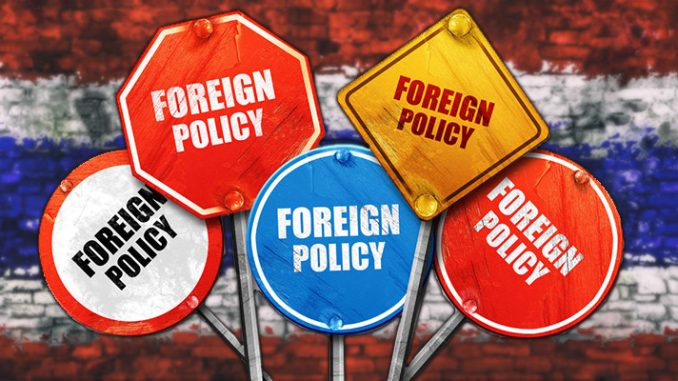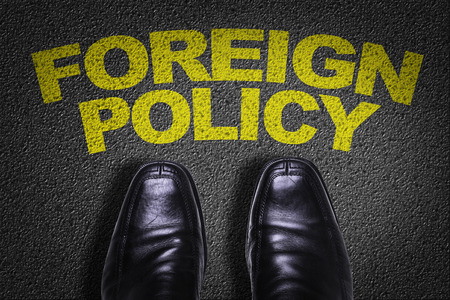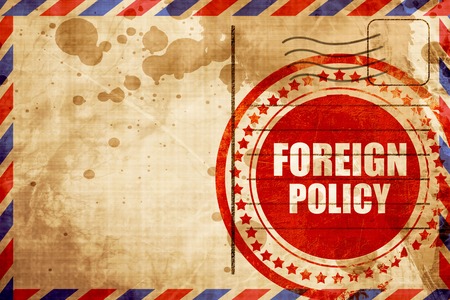
Thailand, formerly recognised in the old days as Siam, has been generally praised for its successes in astute diplomacy. The conduct of Thai foreign affairs is commonly characterised as ‘bending with the wind policy’, ‘bamboo diplomacy’, or ‘flexible approach to foreign policy’. The survival of Thailand from the European imperialism in the 19th century, the diplomatic opportunism during the First World War, and the capricious adaptation from joining with Japan to becoming one of the victor powers in the aftermath of the Second World War, are upheld as uniquely exemplary behaviours of Thai foreign relations.
According to Pavin Chachavalpongpun (2010, 67-72), pragmatism and flexibility are the core principles of Thai foreign policy whereas ‘opportunism, alliance, and bandwagoning’ are the key techniques to understanding the behaviours of Thailand in the international arena. For Pavin (2010, 60), the maintenance of national sovereignty and territorial integrity is the central concern of Thai leaders in managing foreign relations. Such standardised policy prescriptions of Thailand have become a textbook narrative in discussing Thailand’s foreign affairs from past to present (see for example Hall 1968; Kislenko 2000, 2002; Likhit, 1974; Nuechterlein, 1965; Pensri 1984; Wyatt 2003).
It is imperative to probe into the nature of the characters of Thai foreign policy. Corrine Phuangkasem (1999, 2-3), one of the experts on Thai foreign policy, has summarised the strategic management of Thailand’s behaviours into three categories. Firstly, Thailand would always accommodate the demands of any powers which are the threats to national sovereignty. Secondly, Thailand occasionally pits one great power against another by forming an alliance in order to forge equilibrium vis-à-vis a menacing foe. Thirdly, Thailand, regardless of principle and shame, would not decline to befriend any prevailing or victor power. These three tenets can be encapsulated into one phrase: bamboo bending with the prevailing wind.
At face value, it seems that the nature of Thai foreign policy behaviours, as suggested by Corrine, is conceptualised from the conduct with external powers. The account similarly implies how Thailand has been reactive as opposed to proactive in relation to foreign policy formulation. The aforementioned epitomes of Thailand seem to be perfectly convincing to capture instances of Thailand in historical events. The language describing the behaviours is also exclusively unique to Thailand. But is the case of Thailand so unique to students of International Relations (IR) to the extent that there is no room to depart from a conventional account?
It is of importance to elucidate that the tradition of small state studies in IR is nothing original to the discipline. Although IR has been satirised as a ‘great power discipline’ (McDonald 1996, 91-118), the discussion of small states is the sine quo non of making sense of global dynamics in every period. Hans Morgenthau (1948, 196), an internationally acclaimed scholar of classical realism, briefly proposes that the independence of the small states is hinged on the balance of power among great powers. The greater powers could subjugate the weak nations under their protectorate. Likewise, Kenneth Waltz (1979, 195), a self-claimed structural realist, hints that the fate of the small states would be determined by the international structure. For the structural realists, the distribution of capabilities among great power and their intense competition influence choices of the small states in an international sphere. The small states would either adapt to any changing international structure or perish. In other words, the small states are too small to shape any agenda in the international system.
IR Scholars who are specifically keen on small states find similar results in small state behaviours. Firstly, it has been observed that the small states would be less likely to undertake any assertive and proactive stances on the international stage (East 1973, 563; Rosenau 1974, 273). Secondly, since the small states are hypersensitive to the issue of national security (Vital 1971, 124), they would be expected to maintain a low-profile stance (Barston 1973, 16). Their physical security is ultimately dependent on the great powers. In this regard, a group of scholars working on small states have unanimously subscribed to Waltz’s structural account to interpret the behaviours of the small states (Rothstein 1968, 82; Barston 1973, Introduction; Handel 1981, 261-62).
The debate between IR scholars is not the centre of gravity of this article. What then are the implications of reviewing IR pieces and Thai foreign policy? At the outset, it seems irrelevant. A closer inspection reveals quite a number of puzzles to rethink as regards the issues of Thai foreign policy. Firstly, the number of small states in the world far exceeds the number of great powers. Hence, the foreign policy behaviours of Thailand from past to present are not distinguished from other weak states. The patterns of Thai foreign policy behaviours, as described by Corrine, bear a striking resemblance to other small-state cases investigated by IR circles. That is, the small states cherish survival, tender reactive and passive policy, and choose bandwagoning and balancing depending on circumstances. These are the pragmatic and flexible qualities for the small states to maximise national security and interest.
Secondly, by labelling the case of Thailand foreign policy behaviours as if it is exclusive, there is a risk that the IR students might encounter a difficulty in disproving or falsifying the cases of Thailand. In IR, the so-called realist research programme has been criticised for extending its approaches, concepts, and components in defence of the theory to the degree that everyone has become a realist (Legro & Moravcsik 1999). Therefore, the realist research programme has become degenerative (Vasquez 1997). To simplify this, it means that the realist approach is frequently bereft of its depth to explain some cases, but some realist supporters often devise a concept under the umbra of realism, and eventually, render it difficult or almost impossible to falsify realism. One of the most prominent examples of this phenomenon is how Fareed Zakaria (1998) fulfils the glitch of the neo-realist assumption about the state expansion by investigating the case of the expansionist policy of the US. According the general neo-realist precept, the state expands when facing external threats. It however is not the case with the US in the 19th century. Zakaria explains the neo-realist incongruity by introducing the domestic factors into account and describing the ability of the state to extract resources as a key to the US expansion. He later terms his approach as ‘state-centred realism’. Not only Zakaria, there has been others who similarly pursue this path in salvaging the realist limitations. This would jeopardise the realist approach in the long run because there would eventually be no room for others to dispute the approach. The realist paradigm would, in short, always be an unquestionable gospel.
Is it the case with the study of Thai foreign policy behaviours as well? It remains difficult to reaffirm such an argument because there is no rigorously theoretical piece of Thai foreign policy behaviours in the first place. However, it appears that debunking the bending-with-the-wind approach has already become one of the most insurmountable tasks. For example, how could a student of IR tell whether the honeymoon period of the US-Thai relations during the dawn of the Cold War is genuinely a flexible foreign policy approach when it had taken almost two decades before the nadir? Is it possible to view the rigid alliance between Thailand and the US as a withdrawal of flexible foreign policy to become inflexible? The case could conform to both flexible and inflexible foreign policy behaviours. By analysing Thailand through the conventional framework, disproving any cases is not an easy enterprise.
Another example is the case of Franco-Thai clash in 1940 during the Second World War. Once, Thailand had trumped the French and regained the lost territories during the premiership of Phibun (1938-1944). In June 1940, France fell to the Third Reich while the negotiations between the Thais and French over the Non-Aggression Pact was on going. It was in no absolute necessity to pursue a proactive foreign policy to the extent that the nation went to war with France while it had declared strict neutrality earlier. Does this case fall into the bending-with-the-wind category? One prominent specialist on Phibun fascinatingly concludes that ‘Prime Minister Phibun’s approach to foreign relations was no different from that of the traditional ruling class since 1855…[Thai foreign policy during Phibun] was in line with the time-honoured understanding of Thai leaders concerning the immense value of the policy of neutrality’ (Kobkua 1995, 241). It is noteworthy to remark in this place that the bending-with-the-wind method could be metaphorically equated with the panacea because it perfectly and legitimately conforms to everything Thailand has played in an international sphere. As such, disproving it becomes superficially improbable.
Since the course of flexible foreign policy behaviours of Thailand is not much different from IR accounts on small states, which have been under the tutelage of the realist precepts. There is a new hope for the IR students to resolve such anomalies. The first step is to approach the question of Thai foreign policy behaviours from a new perspective. Instead of treating the Thai case as special, scholars should be compelled to treat Thailand as one of many cases. If realism and neo-realism, sturdy in their existence, manifest great weaknesses, there is no exception to the bending-with-the-wind notion which resembles the small state literature. One of the widely teaching examples of the realist tenets is the ‘Melian Dialogue’ which has spelled out how the weak suffer what they must. Yes, the Melian Dialogue has been a textbook template to understanding realism. It is the dialogue between the mighty Athenians and the weak, but proud Melos. Nevertheless, the tale par excellence exposes the weakness of realism itself: Why and how did the Melos choose to fight even if they realised their fate of destruction?
In comparison to the case of Thailand, it would be more enthralling to explain why the Thai elites miscalculated the situation during the 1893 Paknam Crisis? According to Thongchai Winichakul (2011), the Siamese elites in the late 19th century, ‘instead of manoeuvring delicately and independently between the two superpowers, as a matter of fact, the Siamese rulers were pro-British. They trusted that the British would help them if they got into a conflict with the French’ (26). What drove the Siamese into the British camp is a thought-provoking exercise for any IR students. In theoretical terms, why and how did the pro-British posture of the elites were prioritised over the course bending with the wind? Did self-esteem play a significant role over the policymaking process of the time? Or did the ideational foundations of the elites were crucial to interpret the case? The case and the questions pave a captivating path for the IR students who, at least, seek to make sense of Thai foreign policy behaviours beyond the conventional explanation.
Another stepping-stone effort is to formalise the Thai foreign policy descriptive variations into a social scientific manner. As Corrine, and many others have identified different policy responses and characters of Thailand, it is vital to question how, when, and under which conditions that shape the Thai foreign policy behaviours. In IR, there have been attempts to discuss the conditions which drive any small states to seek balancing and bandwagoning if they are dictated by the versatility of the international structure. For example, Stephen Walt (1987, 29-30), Jack Levy (1989, 231), and Randall Schweller (1997, 928), despite differences in stating which conditions shape the bandwagoning practice of the small states, assess how the small nations would generate a bandwagoning policy. On the contrary, Eric Labs (1992) resorts to contrast the others by studying cases from the past and arguing that the small states throughout history would prefer balancing to bandwagoining.
These IR scholars pose research questions in a theory-guided social scientific vogue. They have uplifted the debate to the next level, given the fact that the small states are understandably blessed with limited policy options. As for now, the study of Thai foreign policy behaviours along the theory-guided tradition is in a state of poverty. There are shortcomings in the study of Thai foreign policy behaviours through policy choices and conditions. It is commonly believed that Thailand would generally pursue a bending-with-the-wind choice. But if, as exemplified earlier, there are nuances in interpreting each case of Thailand’s behaviours, defying each case and each policy variation on different theoretical grounds could open more level-playing fields for the IR scholarship.
In fact, an interest in the middle powers and small states has resurfaced in recent years (see selected publications Aaltola 2011; Armstrong & Read1998; Browning 2006; do Céu Pinto 2014; Doeser 2011; Elman 1995; Goetschel 1998; Gvalia, Siroky, Lebanidze, & Iashvili 2013; Lee 2006; Maass 2009; Neumann & Gstöhlkt, 2004). These works approach the question of the small states from an angle of non-realist perspective. They examine how the small states behave different from the neo-realists would anticipate.
In the case of Thailand, Pongphisoot Busbarat (2009) has already undertaken a step to part company with the conventional approach of flexible foreign policy. In his unpublished magnum opus, Pongphisoot has examined how the role of self-perception has influenced proactive foreign policy behaviours in the cases of Prime Minister Chatichai Choonhavan and Thaksin Shinawatra. In approaching the cases of Thailand from a constructivist perspective, he does not disregard the hurdles discussed in this article as he notes that the relationship between ideational elements and Thai foreign policy study are ‘treated like questioning the existence of gods in the mind of devout adherents to a religious belief. They believe in their existence but never seek any empirical evidence of how much gods influence men’s daily lives’ (8). In other words, there has been a sense of IR constructivism in the study of Thai foreign policy. But a few people have actually evaluated the cases from theoretical perspectives.
Pongphisoot’s work has coloured IR and the study of Thai foreign policy behaviours. His piece has signalled the students of IR that there are rooms of interplay between theoretical applications and the case of Thai foreign policy behaviours. What is important is for the IR students wishing to reinterpret the case of Thailand to explore a wide range of IR theoretical tools to shed light on the study of Thai foreign policy behaviours from a different view.
Peera Charoenvattananukul
PhD candidate in Politics and International Studies, University of Cambridge
YAV: Kyoto Review of Southeast Asia, Issue 21, March 2017
REFERENCES
Aaltola, M. (2011). Agile Small State Agency: Heuristic Plays and Flexible National Identity Markers in Finnish Foreign Policy. Nationalities Papers, 39(2), 257-276.
Armstrong, H. W., & Read, R. (1998). Trade and Growth in Small States: the Impact of Global Trade Liberalisation. The World Economy, 21(4), 563-585.
Barston, R. P. (1973). Introduction. In R. P. Barston (Ed.), The Other Powers: Studies in the Foreign Policies of Small States New York: Barnes and Noble.
Browning, C. S. (2006). Small, Smart and Salient? Rethinking Identity in the Small States Literature. Cambridge Review of International Affairs, 19(4), 669-684.
Corrine, P. (1999). Thailand’s Foreign Policies: The Four Decades After the Second World War (1945-1989). Retrieved from Bangkok: Faculty of Political Science:
do Céu Pinto, M. (2014). A Small State’s Search for Relevance: Peace Missions as Foreign Policy. International Peacekeeping, 21(3), 390-405.
Doeser, F. (2011). Domestic Politics and Foreign Policy Change in Small States: The fall of the Danish ‘Footnote Policy’. Cooperation and Conflict, 46(2), 222-241.
East, M. A. (1973). Size and Foreign Policy Behavior: A Test of Two Models. World politics, 25(4), 556-576. doi:10.2307/2009952
Elman, M. F. (1995). The Foreign Policies of Small States: Challenging Neorealism in its own Backyard. British Journal of Political Science, 25(02), 171-217.
Goetschel, L. (1998). Small States Inside and Outside the European Union: Springer Science & Business Media.
Gvalia, G., Siroky, D., Lebanidze, B., & Iashvili, Z. (2013). Thinking Outside the Bloc: Explaining the Foreign Policies of Small States. Security Studies, 22(1), 98-131.
Hall, D. G. E. (1968). A History of South-east Asia (3rd ed.). London: Macmillan.
Kislenko, A. (2000). Bamboo in the Wind: United States Foreign Policy and Thailand During the Kennedy and Johnson Administrations 1961-1969 Unpublished PhD Thesis, Ottowa: University of Toronto, Ottowa.
Kislenko, A. (2002). Bending with the Wind: The Continuity and Flexibility of Thai Foreign Policy. International Journal, 537-561.
Kobkua, S.-P. (1995). Thailand’s Durable Premier: Phibun through Three Decades, 1932-1957: Oxford University Press, USA.
Labs, E. J. (1992). Do Weak States Bandwagon? Security Studies, 1(3), 383-416.
Lee, M. (2006). How Do Small States Affect the Future Development of the EU: Nova Publishers.
Legro, J. W., & Moravcsik, A. (1999). Is Anybody Still a Realist? International Security, 24(2), 5-55.
Levy, J. (1989). The Causes of War: A Review of Theories and Evidence. In P. E. Tetlock, J. L. Husbands, R. Jervis, P. C. Stern, & C. Tilly (Eds.), Behavior, Society and Nuclear War. New York: Oxford University Press.
Likhit, D. (1974). Siam and Colonialism, 1855-1909: An Analysis of Diplomatic Relations: Thai Watana Panich.
Maass, M. (2009). The Elusive Definition of the Small State. International politics, 46(1), 65-83.
McDonald, T. J. (1996). What We talk About When We Talk about History? In T. J. McDonald (Ed.), The Historic Turn in the Human Sciences (pp. 91-118). Michigan: University of Michigan Press.
Neumann, I., & Gstöhlkt, S. (2004). ‘Lilliputians in Gulliver’s World? Small States in International Relations’ Centre for Small State Studies. Retrieved from
Nuechterlein, D. E. (1965). Thailand and the Struggle for Southeast Asia. Ithaca, N.Y.,: Cornell University Press.
Pavin, C. (2010). Reinventing Thailand : Thaksin and his foreign policy. Singapore Chiang Mai, Thailand ;: Institute of Southeast Asian Studies ; Silkworm Books.
Pensri, D. (1984). Kantangprathet kapekrat lae amnachothiptaikhongthai tangtaetsamairatchakanthisithuengsinsamairatbanchomporphibunsongkhram [Thai Foreign Affairs and Sovereignty from King Rama IV to the end of Field Marshal Pibul Songkhram]. Bangkok: Chaopraya.
Pongphisoot, B. (2009). Embracing Proaction: the Role of Self-perception in Thailand’s Post-Cold War Foreign Policy. Unpublished PhD Thesis, Australian National University.



